Beyond Traditional Asset Management
In a world increasingly shaped by ideas, innovation, and rapid change, traditional balance sheets tell only part of the story. While companies meticulously account for physical assets like property, plant, and equipment, they often neglect their most potent source of competitive advantage: organizational knowledge.
Knowledge—embedded in people, processes, customer relationships, technologies, and culture—is arguably one of the most valuable assets any enterprise possesses.
Yet most organizations fail to formally identify, measure, protect, and leverage this critical asset.
It’s time for a new approach: building the intelligent balance sheet—one that recognizes knowledge as a tangible force behind enterprise value, resilience, and future growth.
Step 1: Identifying Organizational Knowledge Assets
The first step in building an intelligent balance sheet is understanding what knowledge your organization owns and where it resides.
Key Actions:
-
Conduct Knowledge Audits
Map critical knowledge domains across technical expertise, client relationships, operational know-how, and market intelligence. -
Identify Key Knowledge Holders
Highlight individuals and teams who possess unique or hard-to-replace expertise. -
Locate Knowledge Repositories
Catalog documents, databases, project archives, customer records, research findings, and informal systems where valuable knowledge resides. -
Recognize Tacit Knowledge
Not all knowledge is documented—some is experiential. Recognize critical tacit knowledge that drives decision-making and innovation.
Step 2: Measuring Knowledge Value
While traditional valuation methods struggle with intangibles, businesses can still estimate the value of knowledge by linking it to business outcomes.
Key Actions:
-
Tie Knowledge to Revenue Streams
Identify knowledge that contributes directly to revenue generation, customer acquisition, or retention. -
Analyze Productivity Impact
Measure how knowledge accelerates project delivery, reduces error rates, or enhances product quality. -
Estimate Cost Avoidance
Quantify savings from reusing knowledge rather than duplicating efforts. -
Assess Risk Exposure
Calculate the potential financial impact of losing critical knowledge—especially in specialized industries or niche markets.
By associating knowledge with concrete business outcomes, companies can begin to quantify its value and prioritize its protection.
Step 3: Protecting Knowledge Assets
Knowledge, once recognized as a critical asset, must be protected just like financial or physical assets.
Key Actions:
-
Establish Knowledge Management Systems (KMS)
Deploy digital platforms to capture, organize, and share knowledge across teams and locations. -
Embed Knowledge Capture into Daily Processes
Make knowledge documentation a natural part of workflows—for example, by requiring post-project reviews and standard operating procedures. -
Mitigate Knowledge Loss Risk
Use succession planning, mentorship programs, and structured knowledge transfer initiatives to safeguard against employee turnover. -
Secure Intellectual Property
Protect proprietary knowledge legally through patents, copyrights, trademarks, and confidentiality agreements. -
Encourage a Culture of Sharing
Build an organizational culture that rewards collaboration, openness, and continuous learning.
Step 4: Leveraging Knowledge for Competitive Advantage
Once knowledge assets are identified, measured, and protected, they must be actively leveraged to create business value.
Key Actions:
-
Empower Decision-Making
Use knowledge repositories to enable faster, smarter, data-driven decisions across all levels of the organization. -
Accelerate Innovation
Encourage teams to build on existing knowledge, past projects, and customer insights to drive faster, more effective innovation cycles. -
Enhance Customer Relationships
Equip client-facing teams with historical customer data, solution archives, and industry insights to deliver superior service. -
Optimize Operational Efficiency
Streamline processes and eliminate redundancies by leveraging documented best practices and lessons learned. -
Support Strategic Planning
Use organizational knowledge assets to identify emerging trends, anticipate market shifts, and inform long-term strategic initiatives.
Conclusion: From Traditional to Intelligent Balance Sheets
Building an intelligent balance sheet is about acknowledging that what an enterprise knows is just as critical as what it owns.
Organizations that elevate knowledge to the status of a managed, measured, and protected asset will not only survive but thrive in the knowledge economy.
They will innovate faster, serve customers better, make smarter decisions, and build resilience against disruption.
At Dawgen Global, we believe that the future belongs to enterprises that capture the full value of their intellectual capital—and lead not just with assets, but with insight.
The intelligent balance sheet is not a luxury.
It is the blueprint for sustainable success in the 21st century.
Next Step!
“Embrace BIG FIRM capabilities without the big firm price at Dawgen Global, your committed partner in carving a pathway to continual progress in the vibrant Caribbean region. Our integrated, multidisciplinary approach is finely tuned to address the unique intricacies and lucrative prospects that the region has to offer. Offering a rich array of services, including audit, accounting, tax, IT, HR, risk management, and more, we facilitate smarter and more effective decisions that set the stage for unprecedented triumphs. Let’s collaborate and craft a future where every decision is a steppingstone to greater success. Reach out to explore a partnership that promises not just growth but a future beaming with opportunities and achievements.
✉️ Email: [email protected] 🌐 Visit: Dawgen Global Website
📞 Caribbean Office: +1876-6655926 / 876-9293670/876-9265210 📲 WhatsApp Global: +1 876 5544445
📞 USA Office: 855-354-2447
Join hands with Dawgen Global. Together, let’s venture into a future brimming with opportunities and achievements

